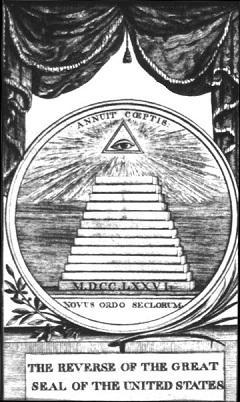 Welcome
Welcome"The past is unpredictable." (Source unknown; original reference was to The Soviet Union)
Some years ago, George Steiner characterized the then just past one hundred years as: "The Century of Barbed Wire".
Clearly, since his pronouncement preceded "the millennium" by a couple decades, the description cannot apply to precisely the high-school-history-class historical time-line time-span from 1900CE thru 1999CE. Steiner's periodization begins approximately with Joseph Farwell Glidden's patent application: 1873. Yes, barbed wire was an all-American invention, but, apparently, too late for employment in the first modern war: America's Civil War (1861-65). It became popular with political regimes of various persuasions, from Adolf Hitler's Final Solution to Franklin Roosevelt's sequestration camps for Japanese Americans (Nisei) after Pearl Harbor. Today, this epoch has yet to show any signs of closure (contrast with: enclosures...).
From the taming of "the Wild West", now over a century ago, to the continuing containment of one's local prison population(s) today, across a universe (polymorphous perverse?) of various kinds of internment facilities, in which Stalin's Gulag Archipelago has been only one large galactic cluster... barbed wire has been keeping people in where they wanted to get out (stalags, penitentiaries, various flavors of detention camps...), and keeping them out where they wanted to get in (international borders, "island compounds" of the very rich amidst seas of the poor, "secret" research stations...).
One of the most storied deployments of barbed wire, of course, was to populate "no man's land" between the Allied and German trench lines on The Western Front (above), in the war to end all wars, World War I, where Wilfred Owen, a late casualty, wrote that "Dulce et decorum est pro patria mori" was an old lie and learn how to quickly don your gas masks, men. (Dr. Richard Gatling's eponymous invention – another American innovation –, also, helped there. The very title of military historian Richard A. Gabriel's excellent study of military psychiatry says it all: "No more heroes".).
Not all uses of barbed wire may have been baleful[1] (it comes in "bales"...). But, for better and for worse, barbed wire has changed the world, and, more urgently: exacerbated it. As Marshall McLuhan said: "the message of any medium or technology is the change of scale or pace or pattern that it introduces into human affairs" (Understanding Media, p. 24). It seems reasonable to hypothesize that barbed wire – beginning with the hostilities it enflamed between cattlemen and farm settlers in the 19th century American West –, has not been a "cool" – esp.: cooling (as opposed to "chilling"...) – medium.

 |
  |